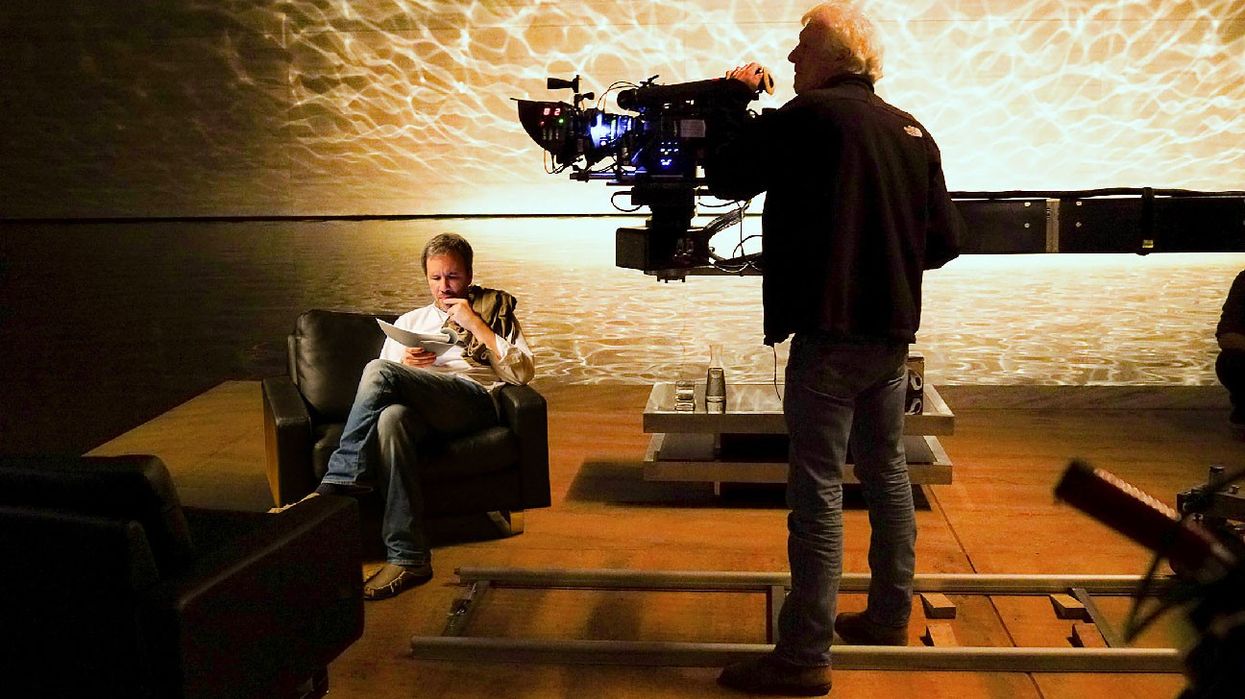Watch Roger Deakins Dole Out Cinematography Knowledge for 2 Whole Hours
Roger Deakins is a genius...and spending a few hours with him is a great use of your free time.

You rarely get to pick the brain on a national treasure like Roger Deakins, but I unearthed this almost 2-hour question and answer session with the master and his wife, James, where they talk about all things Hollywood, cinematography, and life.
The focus of everything in conversation is Blade Runner 2049, specifically how he defined the look and feel of the movie from the ground up.
How do you pay homage Ridley's Scott's work while also honoring Denis Villeneuve's vision?
It's not an easy balance!
The session was given by Ecole nationale supérieure Louis-Lumière. (I don't speak French but if you know them, tell them I said thank you.)
Lucky for us, the conversation is in English and was illuminating.
Check it out and let's talk after.
Watch Roger Deakins Dole Out Cinematography Knowledge for 2 Whole Hours
One of the coolest things about this session is that they pull stills from Blade Runner 2049 and Deakins just goes through them and tells us what he shot on, how he lit it, and why he chose the colors represented on the screen.
That's full cinematography porn!
Deakins talks a lot about why he values doing almost everything in-camera.
He runs an extensive pre-light when shooting in studio complexes.
And when sets are being built, he spends a day with the art director making sure there would be room for his lights and even giving input on the colors and materials used so he would know how it could be lit.
His gaffer is incredibly involved here, helping track consistency, feel, and feasibility.
This touch in every detail is amazing.
Even in effects-heavy scenes, like the digital projection of the girl in Blade Runner, Deakins wanted to keep it practical.
He used a giant LED screen to make sure the light on Gosling's face would match the VFX dropped in later. And he asked to use misters to create a stage full of real fog, to make it look real later on.
Lastly, I was impressed at all the times Deakins failed. He admits most of what he was doing is trial and error.
You don't always get the look right with LEDs or with the colors or even when you're trying to get actors to interact with fake backgrounds and digital projection. He's open to trying things a new way and dealing with problems as they arise.
That just shows how calm, cool, and collected he must be on set.
It's a testament to his career. He must truly have seen almost everything.
Up next: Listen to Deakin's Podcast!
Everybody...stop what you're doing. Roger Deakins has a podcast.It has happened. The mother of all filmmaking podcasts (aside from maybe this one...) has arrived and we're all here for it.
Keep reading.














